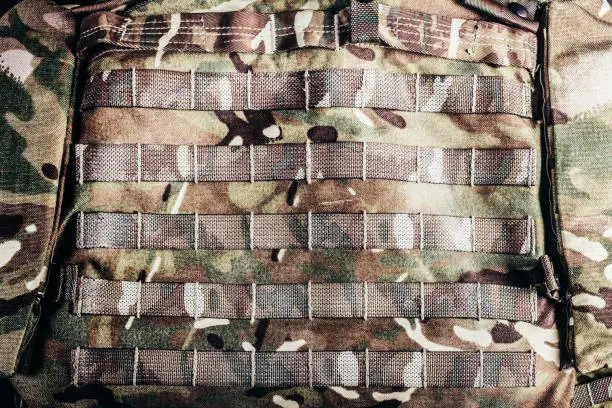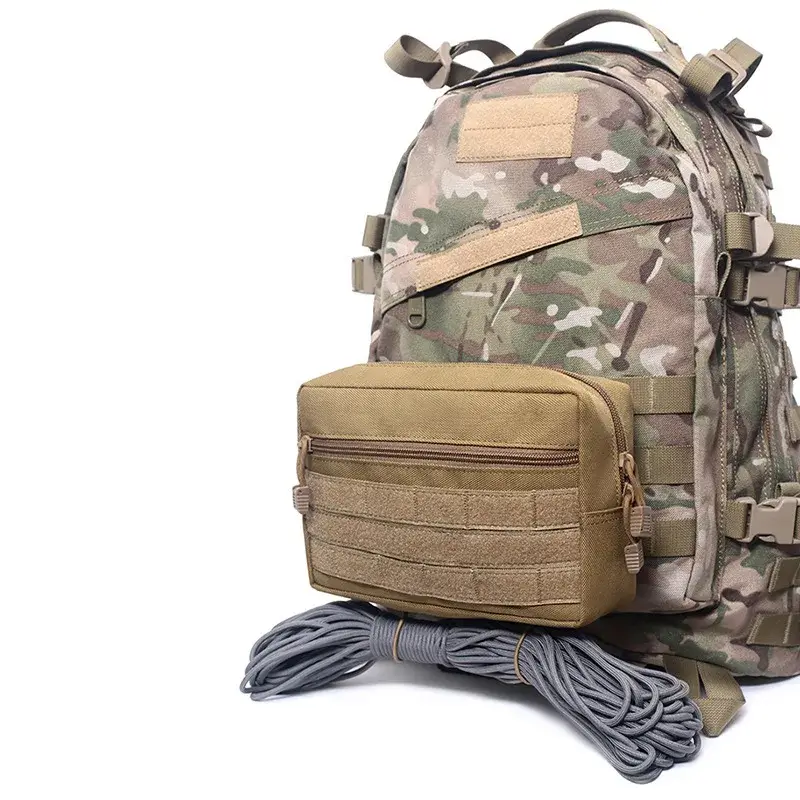Load-bearing equipment has come a long way since the days of simple leather straps and canvas bags. Over time, gear has evolved to meet the needs of soldiers, law enforcement officers, and outdoor enthusiasts. One of the most significant advancements in this field is the MOLLE system. MOLLE, short for Modular Lightweight Load-carrying Equipment, has changed how we carry and organize our gear. This article will explore what MOLLE is, how it works, and why it has become so popular.
What is MOLLE?
The MOLLE system is a modular load-bearing system that allows users to attach and configure various pouches and accessories. It consists of three main components: PALS webbing, pouches, and frames.
- PALS Webbing: PALS stands for Pouch Attachment Ladder System. It is a grid of horizontal webbing straps sewn onto the equipment. These straps create a series of loops that allow pouches and accessories to be securely attached.
- Pouches: MOLLE pouches come in various shapes and sizes and are designed for different purposes. They can hold anything from ammunition and first aid kits to water bottles and radios.
- Frames: Some MOLLE systems include frames to support heavy loads. These frames provide structure and help distribute weight more evenly across the body.
 a camouflage tactical vest featuring PALS webbing for attaching MOLLE pouches and accessories
a camouflage tactical vest featuring PALS webbing for attaching MOLLE pouches and accessories
History of the MOLLE System
Before the advent of the MOLLE system, military personnel relied on different load-carrying systems to transport their gear. One of the best-known was the ALICE (All-Purpose Lightweight Individual Carrying Equipment) system.
Introduced in the 1970s, ALICE was a great improvement over its predecessors, offering better weight distribution and more carrying capacity. However, ALICE had its limitations. The system used metal clips and rigid frames, which could be uncomfortable and noisy. Additionally, the fixed pouches meant soldiers had limited customization options for their gear.
 ALICE (source: Wikipedia)
ALICE (source: Wikipedia)
Development of MOLLE in the Late 1990s to Replace ALICE
Recognizing the need for a more versatile and comfortable load-carrying system, the U.S. military began developing MOLLE in the late 1990s. MOLLE was then designed to address the shortcomings of ALICE.
The new system introduced a modular approach, which allowed users to attach and rearrange pouches and accessories as needed. This flexibility was achieved through the use of PALS webbing which provided a secure and customizable attachment platform.
Key Milestones in the Adoption and Evolution of MOLLE
- Initial Rollout: The MOLLE system was first issued to U.S. military units in the early 2000s. Its introduction marked a significant shift in load-carrying technology, emphasizing modularity and user comfort.
- Feedback and Improvements: Early versions of MOLLE faced some criticism, particularly regarding the durability of the plastic hardware and the complexity of attaching pouches. The military responded by making several improvements, including the use of more robust materials and simplifying the attachment process.
- Widespread Adoption: By the mid-2000s, MOLLE had become the standard load-carrying system for the U.S. Army and Marine Corps. Its success led to its adoption by other military branches and law enforcement agencies around the world.
- Ongoing Evolution: The MOLLE system continues to evolve, with manufacturers constantly innovating to improve its functionality. Recent advancements include the integration of laser-cut webbing, which reduces weight and enhances durability, and the development of specialized pouches for new equipment and missions.
How Does the MOLLE System Work?
The MOLLE system works through a grid pattern of webbing straps. These straps are usually made of heavy-duty nylon and are sewn onto vests, backpacks, and other gear.
To attach a pouch or accessory, you weave its straps (usually at the back) through the PALS webbing. This creates a secure and stable connection. As long as the straps are tightly fastened, the pouch won’t shift or come loose even during intense activities.
One of the main benefits of the MOLLE system is weight distribution. The ability to attach pouches anywhere on the webbing allows users to balance their load. This reduces strain on any one part of the body and increases overall comfort.
 a tan MOLLE pouch attached to a camouflage tactical backpack
a tan MOLLE pouch attached to a camouflage tactical backpack
Types of MOLLE Attachments
MOLLE attachments come in many forms. Some of the most common include:
- Pouches: These are used to carry various items such as ammunition, medical supplies, and personal items.
- Holsters: MOLLE holsters allow users to carry handguns securely on their vests or belts.
- Hydration Systems: These include water bladders and carriers that can be attached to MOLLE gear, making it easy to stay hydrated on the go.
- Specialized Attachments: These include radio pouches, grenade pouches, first aid kits, etc. Each is designed for a specific purpose and integrates seamlessly with the MOLLE system.
Who Uses the MOLLE System?
The MOLLE system is widely used by a variety of different groups:
- Military Personnel: MOLLE is a standard issue for many armed forces around the world. Its adaptability and durability make it ideal for military use.
- Law Enforcement Agencies: Police officers use MOLLE to carry essential gear like handcuffs, batons, and radios.
- Emergency Responders: Firefighters and paramedics use MOLLE to organize their equipment and ensure everything is within reach during emergencies.
- Outdoor Enthusiasts: Hikers, campers, and hunters appreciate the MOLLE system for its versatility. They can customize their gear to suit their specific needs, whether they’re going on a day hike or a week-long camping trip.
How to Use MOLLE
Using the MOLLE system involves a few basic steps:
- Orientation with PALS Webbing: Identify the PALS webbing on your gear. This is where you’ll attach your pouches and accessories.
- Differences Between Sewn Loops and Laser-Cut Slots: Some MOLLE gear uses sewn loops, while others use laser-cut slots. Both serve the same purpose but may look slightly different.
- Steps to Attach and Secure MOLLE Accessories: To attach an accessory, weave its straps through the PALS webbing. Ensure the straps are tightly secured to prevent any movement.
- Tips for Customizing and Balancing Your Setup: Experiment with different configurations to find the most comfortable and functional setup. Balance your load to avoid putting too much weight on one side.
Advantages of the MOLLE System
The MOLLE system offers several key advantages:
- Versatility and Adaptability: MOLLE can be customized to fit any mission or activity. Users can quickly add or remove pouches based on their needs.
- Durability and Reliability: MOLLE gear is made from high-quality materials designed to withstand harsh conditions. This makes it a reliable choice for military and civilian use.
- Ease of Use and Standardization: The MOLLE system is easy to use and has become a standard across many organizations. This standardization means that gear from different manufacturers is often compatible. Standardized sizes for pouches and webbing loops make it easier to find compatible gear.
Conclusion
The MOLLE system has revolutionized the way we carry and organize our gear. Its modular design, ease of use, and adaptability make it an essential tool for military personnel, law enforcement officers, emergency responders, and outdoor enthusiasts. As the needs of these groups continue to evolve, the MOLLE system is likely to remain an integral part of their equipment, providing the flexibility and reliability they need in their demanding roles.
For over 15 years, LQARMY has been a leader in the tactical gear manufacturing sector. We specialize in producing tactical backpacks, vests, belts, and other gear featuring the MOLLE system. Our offerings include wholesale and factory-direct solutions, as well as customized products tailored to your specific needs. For top-quality tactical gear and exceptional service, reach out to us today.


